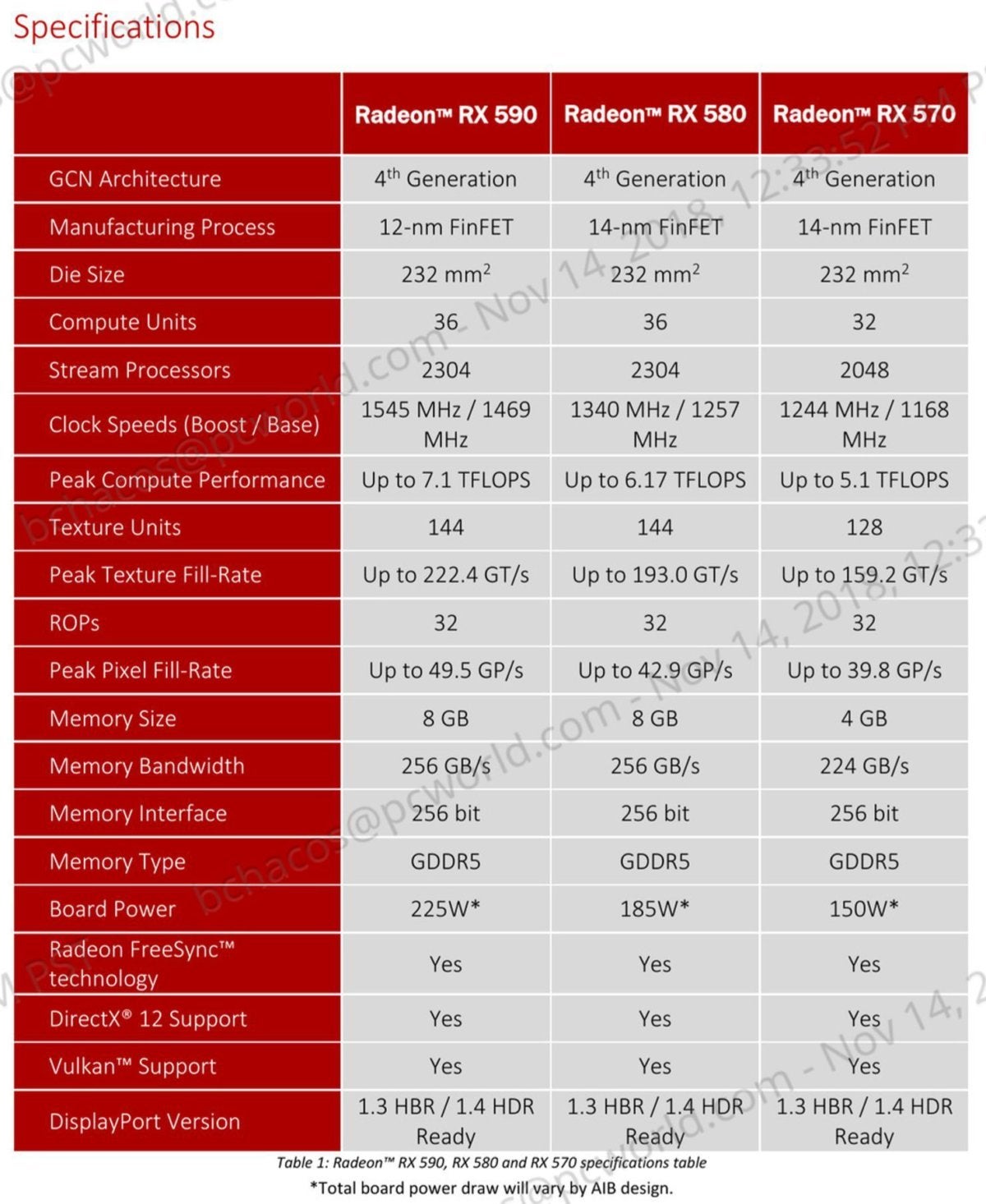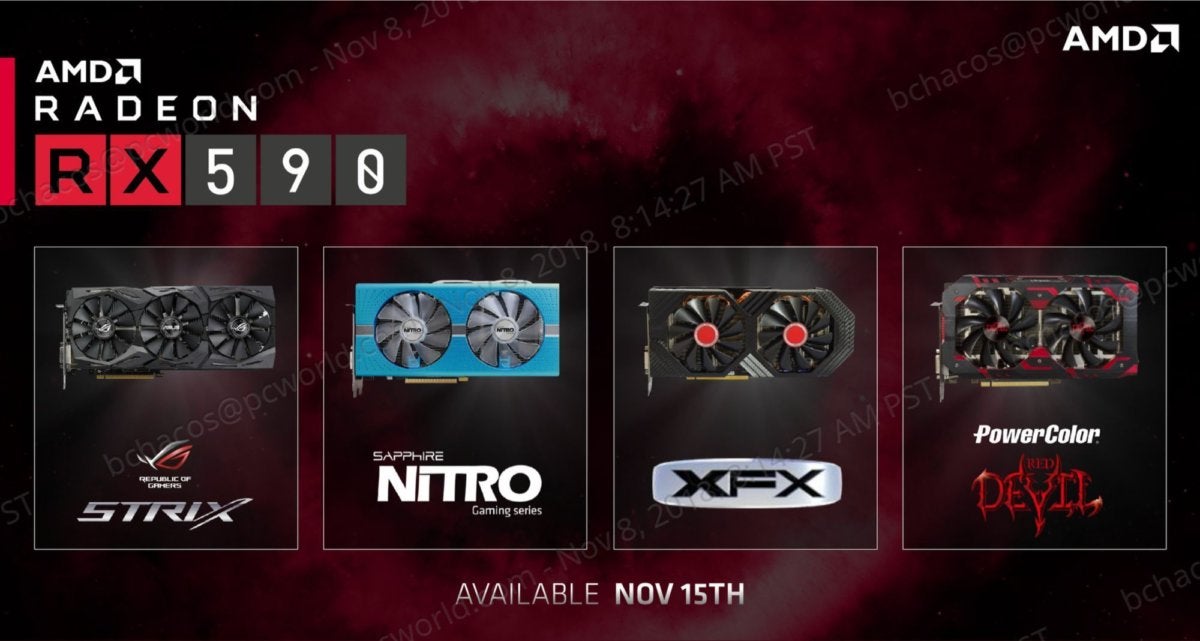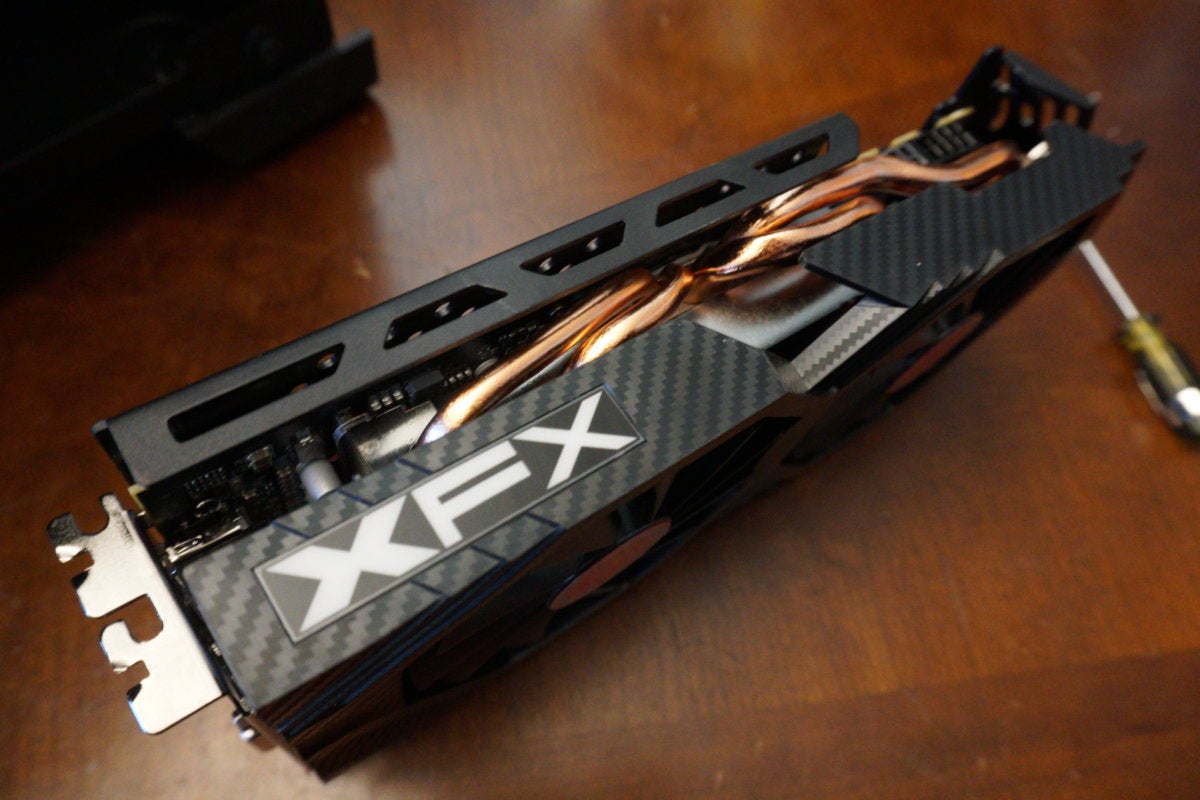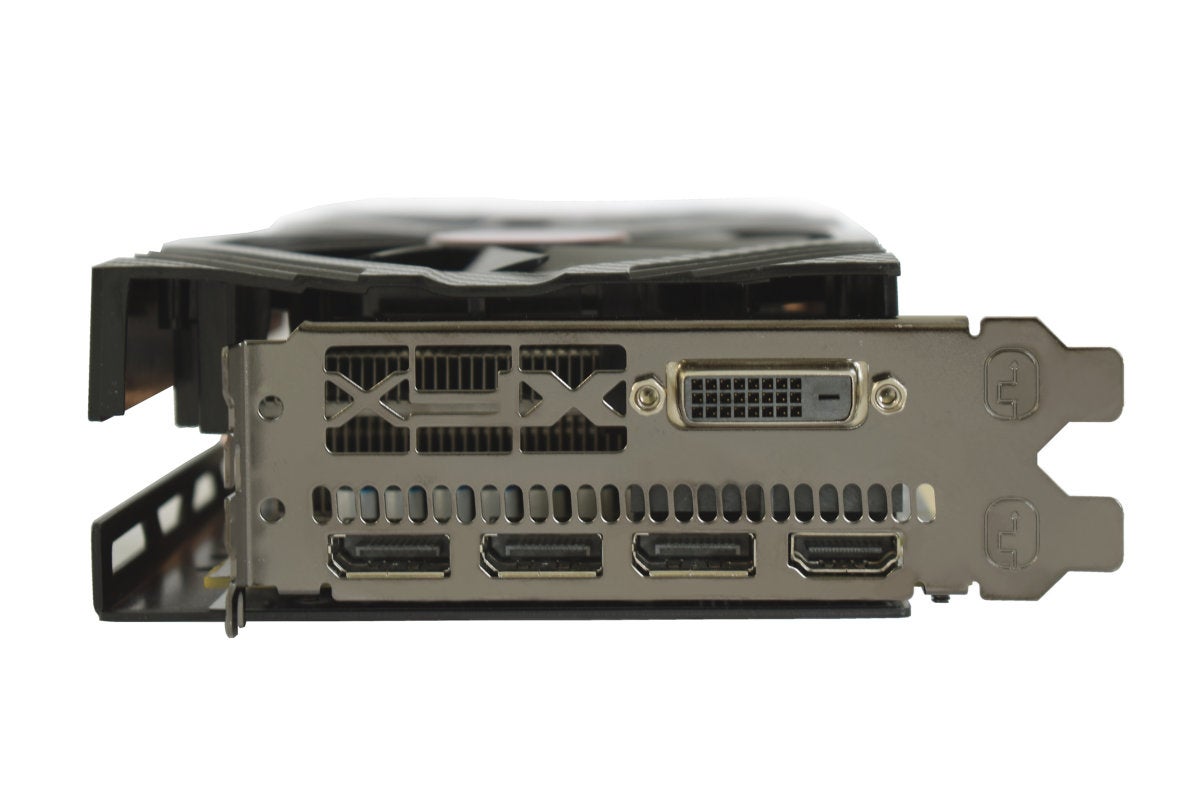
[ad_1]
How can improvements to the GPU manufacturing process make graphics cards better? There’s no one solution, and today’s launch of the $280 Radeon RX 590 shows that Nvidia and AMD took two wildly divergent paths in the shift to the 12nm process.
Nvidia’s used the extra space and process improvements to cram its GeForce RTX 20-series graphics cards with radical, futuristic hardware devoted to driving adoption of real-time ray tracing and machine learning in games. The downside? The cheapest RTX option, the RTX 2070, starts at $500. AMD took a different tack: The Radeon RX 590 is essentially identical to the $240 8GB Radeon RX 580 under the hood, but shifting from 14nm to 12nm let AMD eke out much higher clock speeds than before—and prep a new graphics card that challenges the massive price gap between the $250 GTX 1060 and $370 GTX 1070.
Well, new-ish. AMD’s (rightfully) touting the price advantages of the Radeon/FreeSync ecosystem alongside the Radeon RX 590’s release, bolstered by an aggressive bundle of three hotly anticipated upcoming games, but how much more can the company squeeze out of the Polaris GPU architecture? The Radeon RX 580 was already a slightly faster version of the Radeon RX 480, after all. Let’s find out what happens when you dedicate GPU process improvements to cranking clock speeds to 11.
AMD Radeon RX 590 specs, features, prices
There’s no need to delve deep into tech specs since the Radeon RX 590 is, for all intents and purposes, a faster version of the Radeon RX 580 (and RX 480). The clock speeds are the only significant difference, with the Radeon RX 580 topping out at 1,340MHz. That makes the new Radeon RX 590 more than 200MHz faster. (AMD says the Radeon RX 570 and RX 580 will remain on the market alongside the Radeon RX 590.)
 AMD
AMDRadeon RX 590 vs RX 580 vs RX 570 tech specs. (Click to enlarge.)
The faster reference clock speed doesn’t tell the whole story. AMD isn’t shipping a reference version of the Radeon RX 590, instead relying on its board partners to distribute custom-cooled models. Some, like the XFX Radeon RX 590 Fatboy that we’re testing today, ship factory-overclocked—to 1,580MHz out of the box, in the Fatboy’s case. XFX says the card will overclock to 1,600MHz no problem, if you feel like tinkering, as that’s the frequency setting the company’s labs use during testing and qualification as part of XFX’s OC+ program. A card in the box explains how to use AMD’s Radeon Wattman tool to activate the higher clocks.
Pushing AMD’s Polaris GPU architecture this hard doesn’t come easy, it seems. Upgrading the Radeon RX 480 to the RX 580 made an already power-hungry GPU even more so, and turning the Radeon RX 580 into the RX 590 seemingly demands even more energy despite the shrink to 12nm. All four of the custom cards confirmed for the Radeon RX 590’s launch—the XFX Fatboy, Asus ROG Strix, Sapphire Nitro, and PowerColor Red Devil—feature ferocious, high-end cooling solutions bristling with fans and heavy metal to tame this GPU’s higher power draw (which we’ll detail later in the benchmarks section).
 AMD
AMDThe XFX Radeon RX 590’s “Fatboy” cooler is basically the XFX RX 580’s GTS cooler on steroids—hence the name. The dual large fans on the sculpted shroud still make the card look kind of like a surprised owl. But the primary heatsink is much, much thicker: 25.96mm on the Fatboy, compared to 16.96mm on the RX 580 GTS models. That gives the heatsink a total surface area of 368,866mm2, or nearly 125,000mm2 more than the RX 580 GTS. Thick composite copper pipes snake throughout the thick heatsink, which sits atop a unibody VRM heatsink that facilitates better heat transfer to the main cooling apparatus.
This is a serious cooler—and, no surprise, a triple-slot graphics card. XFX equipped the Radeon RX 590 Fatboy with a branded backplate to keep all that heavy metal from sagging and help dissipate heat.
 Brad Chacos/IDG
Brad Chacos/IDGAn always-welcome dual-BIOS switch lets you choose between maximum performance or quieter noise levels. Our testing was done using the default Performance BIOS, though the Quiet BIOS hushed the Fatboy much more effectively.
XFX loaded the Radeon RX 590 Fatboy with a trio of DisplayPorts, an HDMI port, and DVI-D. You’ll need an 8-pin and a 6-pin power connector to run the graphics card, and XFX recommends a 600-watt power supply, up from the 550W recommended for XFX’s GTS RX 580 GPUs.
 AMD
AMDThe XFX Radeon RX 590 Fatboy will launch at $280 Thursday at Amazon, Newegg, Best Buy, Walmart, Fry’s, Microcenter, and Memory Express. But the graphics card isn’t all you’ll get for your money: AMD’s including “the Blockbuster Game Bundle” with all Radeon RX 590s sold at participating retailers. The bundle gives you free codes for The Division 2, Devil May Cry 5, and Resident Evil 2. You won’t be able to play them right away, though, since all three of these hot triple-A games are scheduled to launch early in 2019.
With that, you know everything you need to know about the XFX Radeon RX 590 Fatboy. Now let’s see how it handles.
Next page: Our test system, gaming benchmarks
Source link